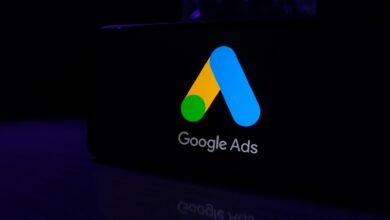Google’s AI Max: Winning Over Skeptical Advertisers

▼ Summary
– Google has released a revised 26-page pitch deck for AI Max, its AI-powered ad suite, to address advertiser confusion from an earlier version.
– The tool matches ads to relevant searches, customizes copy based on user intent, and directs users to brand landing pages automatically.
– Advertisers have raised concerns about brand safety, accuracy gaps, and budget leakage into display networks instead of search.
– Google’s updated deck highlights safeguards like negative keyword lists and a “lightly generated” approach using brand-approved sources.
– Google is testing AI-generated answers with ads in the U.S. and plans ads within AI responses by Q4 2025, with adoption growing and new controls coming.
Google is making a fresh push with its AI Max advertising suite, distributing a revised 26-page pitch deck to address earlier confusion among marketers. The enhanced materials aim to clarify how the platform functions and reassure brands hesitant to embrace fully automated ad solutions. This move signals Google’s commitment to refining its AI-driven advertising tools amid growing industry interest and skepticism.
The system is designed to automatically pair ads with relevant search queries, including those not previously targeted through manual bidding. It tailors ad copy according to user intent and directs traffic to appropriate landing pages, all without human intervention. This promises greater efficiency and reach, though not without raising significant questions.
Advertisers have voiced several concerns, chief among them being brand safety. Some fear the AI might generate misleading claims or associate products with incorrect information, such as attributing clinical data to the wrong skincare item. Such errors could carry legal and reputational consequences.
Accuracy has also been flagged as an issue. Early users note the tool sometimes misreads industry-specific context, pulling irrelevant text, incorrect links, or unsuitable images. These mistakes undermine campaign effectiveness and frustrate marketers expecting precision.
Another common complaint involves budget leakage, with funds earmarked for search campaigns inadvertently flowing into display networks. This lack of spend control has made some agencies hesitant to fully adopt the tool.
In response, Google’s updated materials emphasize new safeguards. Advertisers can now implement negative keyword lists, remove undesirable assets, and exclude specific URLs. The company has also shifted toward a “lightly generated” approach, sourcing ad copy from pre-approved brand materials rather than creating entirely new content.
To minimize risk, Google advises against testing AI Max on campaigns with daily budgets below $50, suggesting that larger spends allow for more reliable data and adjustment.
Looking forward, Google is experimenting with ad placements within AI-generated search answers in the U.S. By the fourth quarter of 2025, the company plans to test ads embedded directly within the first AI response. Adoption is gradually increasing, and additional controls, such as customizable text guidelines, are in development.
Currently in global beta across Google Ads, Ads Editor, Search Ads 360, and the API, AI Max offers the potential for smarter targeting and automated creative generation. However, advertisers remain cautious about relinquishing control over messaging and budgets. How ads are integrated into AI search results could significantly influence visibility, cost efficiency, and competitive positioning.
The future of AI Max may well shape Google’s search advertising business, but its success depends on persuading marketers that automation enhances, rather than compromises, brand integrity and financial oversight.
(Source: Search Engine Land)





